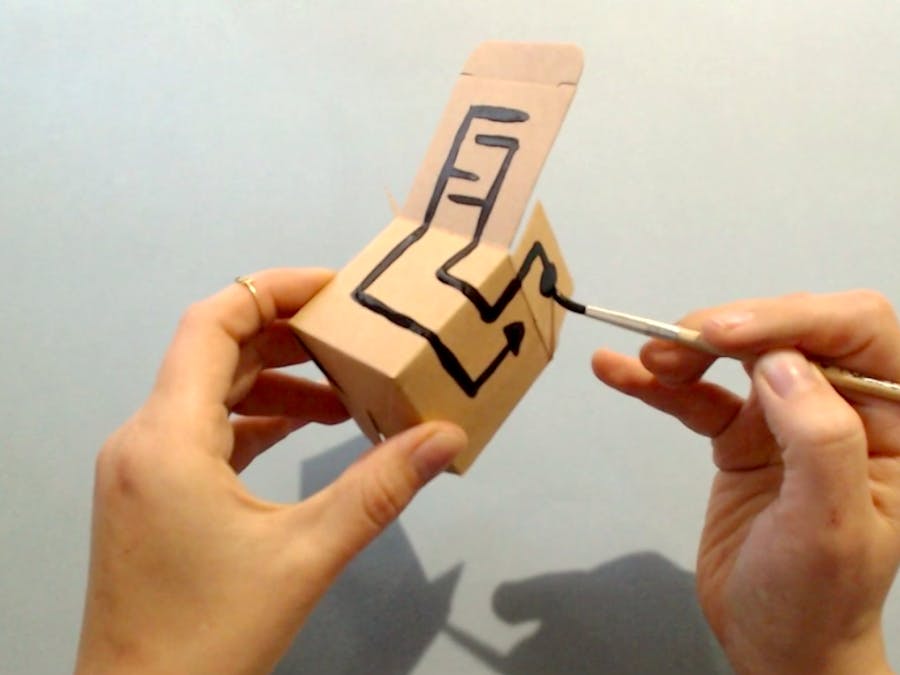If you're looking to make a paper project with a creative spin, try using conductive inks with Circuit Stickers (or other hardware). You can easily produce works of art, without any fiddly wiring.
CircuitScribe PenThis pen writes in conductive silver ink (about 20% silver). According to their FAQ, "the resistance of the ink is 0.5 to 10 ohms for a 1 cm line" – depending on the paper. It is non-toxic.
The pen has the advantage of being neat and portable, and you end up with a "sketchy" look and strong connections. You can draw 60-80 meters with one pen. In the video above, make a roll-up paper lamp that you can stick in a glass for a festive touch. Or create a card for someone:
This conductive paint goes on black, and it's designed to be used any number of ways: brushed on with a paintbrush, finger-painted, screenprinted, and so forth.
Here's a guide to the resistivity of the paint. This is good to keep in mind as you plan large projects. For a small lamp like we're making, it won't be an issue.
The Bare Conductive team has also released tutorials on diluting and sealing the paint, so you can use it any way you like. This lamp used paint that has been diluted a bit, so the LEDs shine less brightly but it goes on very smooth. This does lengthen the drying time, however, so plan ahead!
The paint gets EVERYWHERE, but it's water-soluble (and also non-toxic).
See above for a light-up box project, which illuminates as you open the top. Or paint a little card for someone:
Graphite is conductive too! So make sure that when you're diagramming out your project, you erase any connections that shouldn't be left on the paper. It does have more resistance than either of the other materials, though. Check out the Drawdio kit from Adafruit for a great example of how to use this property of pencils. (If you'd rather make it from scratch, you can also find numerous tutorials and PCB designs online.)













Comments
Please log in or sign up to comment.